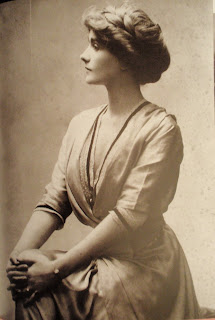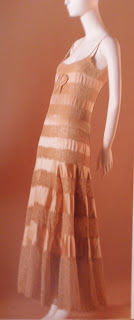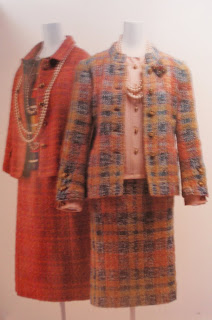 Gabrielle as a shop girls in Moulins 1903 (with one of her many admirers)
Gabrielle as a shop girls in Moulins 1903 (with one of her many admirers)  Gabrielle Chanel, Etienne Balsan and Boy Capel at Royalieu
Gabrielle Chanel, Etienne Balsan and Boy Capel at Royalieu Gabrielle Chanel in 1909
Gabrielle Chanel in 1909Coco Chanel was born Gabrielle
Bonheur Chanel, August 20, 1883. She was the daughter of Albert Chanel and Jeanne
Devolle, a small wares peddler and a shop girl. Gabrielle spent her early childhood
in the public markets where her parents sold their wares.
In 1895, when Gabrielle was 12 years old, her mother died. About a week later Albert Chanel abandoned his two daughters (Gabrielle & Antoinette) at the region's largest orphanage. For the rest of her childhood Gabrielle endured all of the strictness, solitude and mental anguish of harsh convent life.
At 18 Gabrielle left the convent to attend a boarding school in Moulins (that admitted a certain number of girls without means for free). During her two years at the school she was placed as a clerk in a thriving hosiery shop.
The next few years were filled with a series of false starts, including a move to Vichy to pursue singing and dancing.
After her previous ventures proved unsuccessful, Gabrielle moved in with Etienne Balsan (horse breeder, riding enthusiast and beneficiary of a considerable private income) who proposed not marriage but a life together.

























